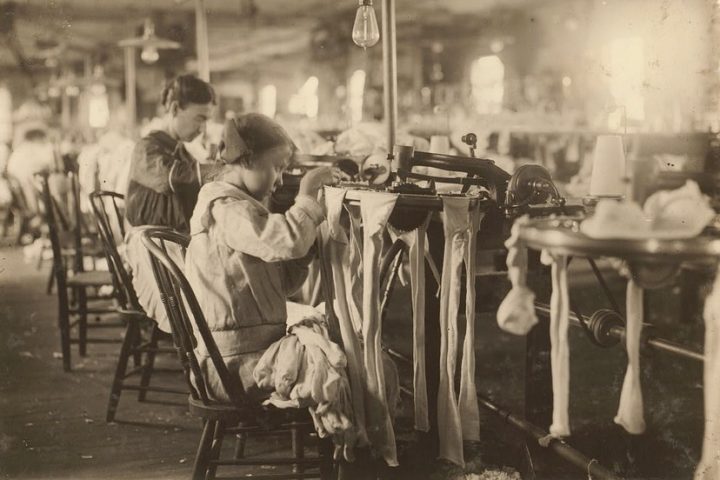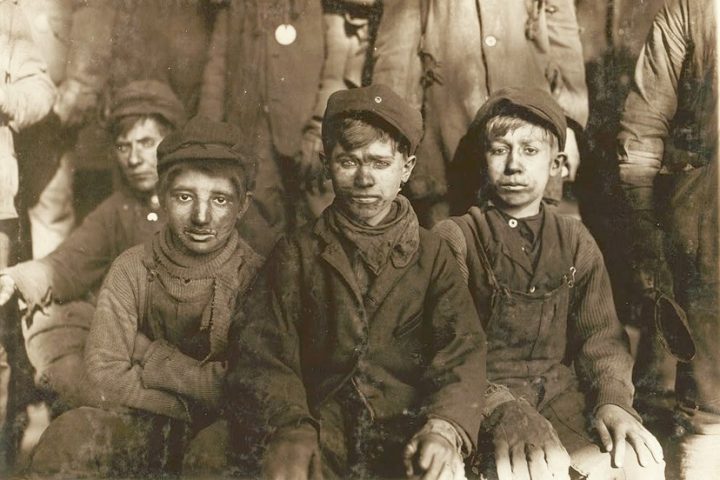There was a time, not so very long ago, when America was engaged primarily in an agricultural economy made up of small family farms (along with the occasional large Southern plantation maintained primarily by African slaves.)
On a small family farm, with its myriad chores and processes, children were a welcome blessing, especially during the busy summer months. By the time America got around to making schooling compulsory in the second half of the 1800s, the American economy was already in transition towards a largely industrial economy. Children were still highly valued, however, because they could work long hours in factories, mines, sweatshops, and mills, and contribute to a family income — even with the pitiful wages they were paid.
I’ve heard claims that we’re now passing into the nation’s next economic phase: the information economy. Much of the work performed by American children in the 1800s, in factories, mines, and mills, and indeed, even on farms, is now performed by children (and adults) in Asia, India, and Africa… or by robots and other machines here in the US.
Fortunately, we still have places for our children to be, and work for them to perform. Or at least we did until the middle of March, when Colorado’s public schools were officially shut down by Governor Jared Polis’ public health orders.
At this week’s May 26 Colorado Department of Education rollout of its new ‘guidance’ document, members of the Colorado media had a chance to hear about, and ask questions about, the Framework and Toolkit for School and District Leaders for Feedback now available on the CDE website.
The questions were various during the online meeting.
Erica Breunlin, from the Colorado Sun, asked, “I’m wondering, what are you telling districts that might have to make serious changes to their classrooms, or to class sizes this fall — while they face significant budget cuts?”
Colorado Education Commissioner Katy Anthes: “So, yes, it’s a challenging situation they’re in. We’re glad that the last infusion of CARES Act money was able to get out to districts last week. So we’re very hopeful that that will support them in their planning and implementation — at least through their first semester… But I also know there are districts that face great challenges, but I also know they are incredibly nimble problem solvers and they will do whatever it takes to support our students and our families.
“So, while it is a challenge — and I won’t sugar-coat that — I know that that’s not stopping them from planning for the start of the 2020-2021 school year.”
I currently sit on the board of the Pagosa Peak Open School, our community’s only public K-8 charter school, and last night, the board considered a budget for the 2020-2021 school year that reflected a projected 10% drop in funding. We understand that some sectors of the Pagosa economy have seen a much greater decline, based on drops in sales taxes paid, but those economic sectors have also had fewer customers.
School districts will presumably have the same number of customers (students and families) as we had in March, while facing a complex set of public health requirements that will challenge the way education has traditionally been delivered.
A 10% decline in funding will be a hard pill to swallow, for most schools.
Michael Konopasek, from FOX31: “I saw some pictures of [schools in ] South Korea, and saw plexiglass barriers around desks? Is that something that’s being considered as a requirement or a recommendation at this point?
“And also, with the six-foot distancing. Is that right now a requirement, or a recommendation?”
I assume Mr. Konopasek was referring to this photo?
CDE has no plans, currently, to require plexiglass barriers at student desks. But the six-foot distancing, we were told, is “guidance from CDC.”
Maybe plexiglass is a more reasonable choice? Maybe a six-foot distance rule is… crazy?
A questioner named Addie: “How soon will we know if in-person school will start in the fall? Can parents expect a notice in late June? Mid-July? Early August? Just because they are going to need that time to prepare…
“And my second question. If there is an outbreak at one of these schools, what is the requirement before they have to shut down?”
Commissioner Anthes: “I know that all of our parents… we hear the frustration and the anxiety, and many of our staff members are also parents, so they want an answer to this question as well.
“Unfortunately, we’re just not going to have the answer very soon around, you know, if we can start school in the fall, as normal, or what precautions will be in place. We really need to see what the real data shows, and that will probably be into August.”
Ah, yes. Real data. There’s so much we don’t know yet, 6 months after the virus was identified in China. We know that some children have died after becoming infected. We don’t know if recovery from an infection confers immunity. We don’t fully understand how the virus usually spreads. We don’t know which mitigation techniques are useless. The US has not yet developed a consistent contact tracing system, and some citizens are fearful of any such tracing system.
We know that a vaccine is unlikely to be available until at least January — if ever. To date, medical science has been unable to develop a vaccine effective against any other known coronaviruses.
Amie Baca-Oehlert, president of the Colorado Education Association, the state’s largest teachers union, said it’s important to have contingency plans but also not to move too hastily, according to a Chalkbeat.org article.
“We think it’s certainly wise to be making a Plan A, a Plan B, a Plan C, but we don’t want to rush to a decision about what August will look like,” she said. “Right now, we just don’t have that information.”
Baca-Oehlert also said it’s essential that educators be included in those conversations, “and not just the classroom teachers, but the bus drivers, the cafeteria workers. They know the circumstances the best; they live them every day, and they’re the most affected.”
Are our local educators and school staff — and parents — being included in the conversation, here in Archuleta County?



